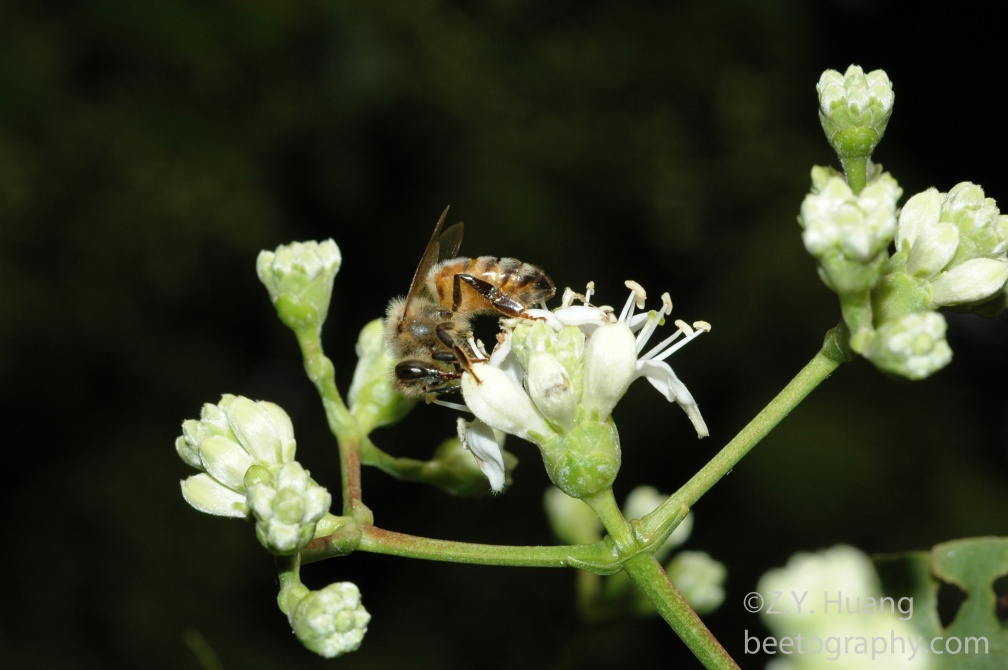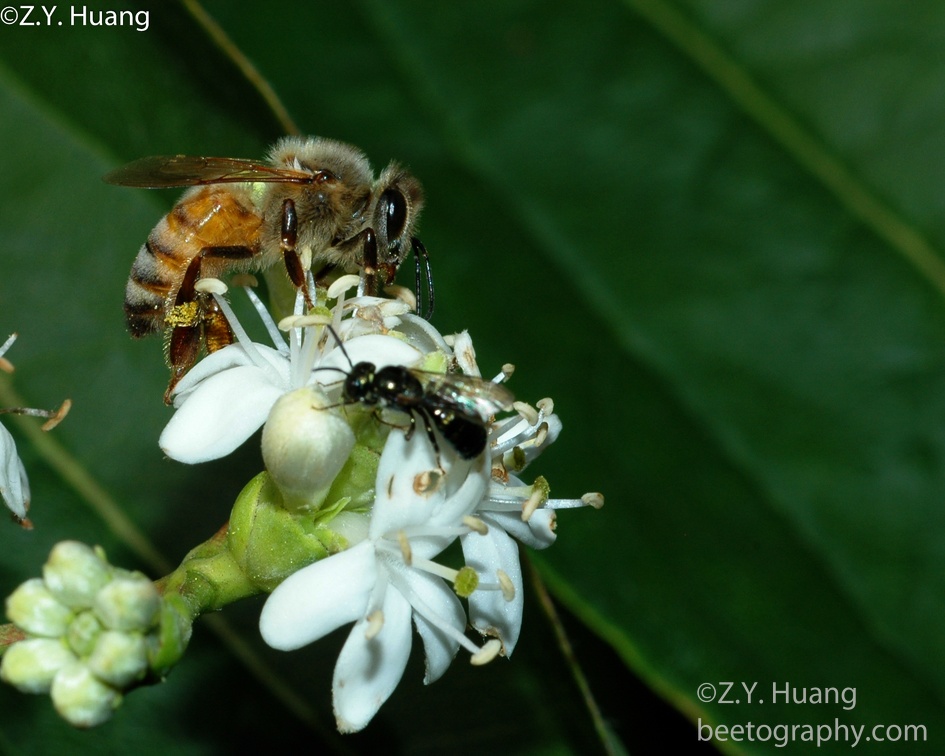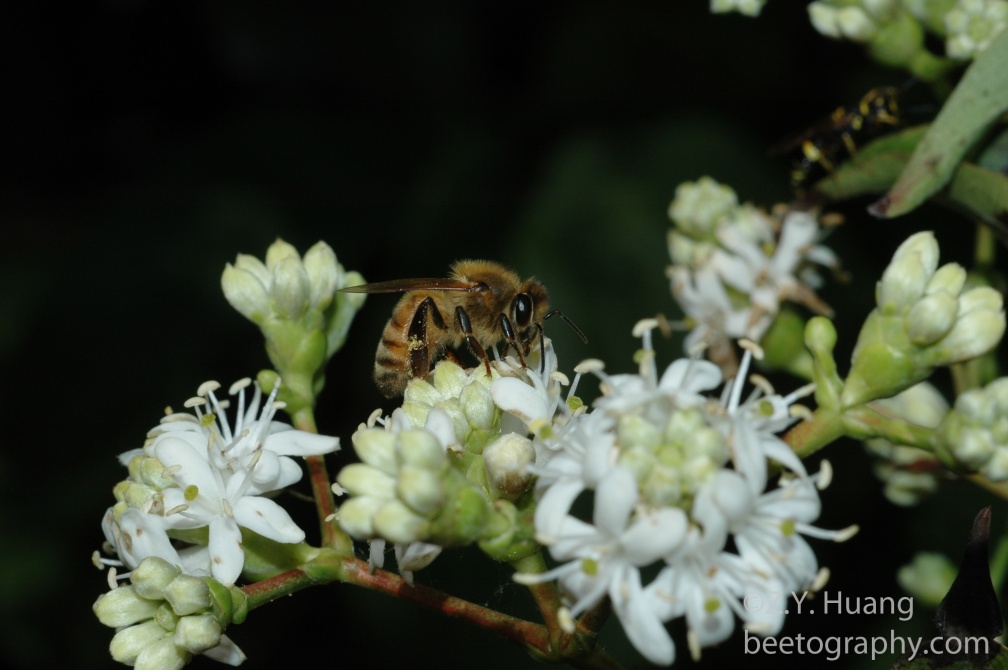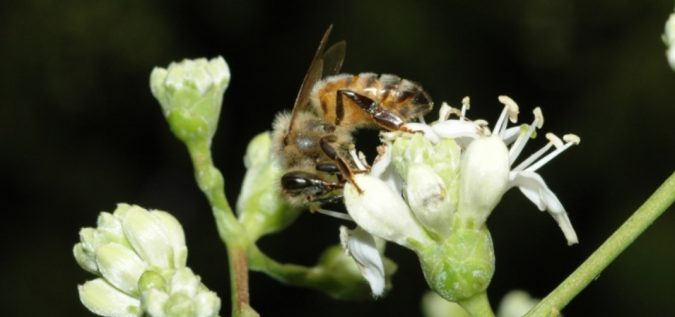| Family: | Caprifoliaceae |
| Genus: | Heptacodium |
| Species: | H. smiconioides |
| Common names: | Seven son’s tree |
| ZBAS | 8 (0 to 10) Zach’s bee attraction score |
This plant is a small tree or tall shrub, endemic to China and first introduced to the Arnold Arboretum (of Harvard University). Its blooming time, August or September in Michigan, is particularly noteworthy. This period, often referred to as a “dearth period” for honey bees due to a scarcity of blooming flowers, makes honey bees particularly sensitive to sweet substances. Even a tiny amount of honey on a truck, or a single frame of honey, can attract ten thousand bees in ten minutes—a phenomenon known as “robbing behavior.” This plant is considered to be a great honey plant for bees in Michigan and is commercially available. It is not invasive based on the information I found.
These photos were taken August 30th 2005, from the Beal Botanic Gardens at MSU. Honey bees, bumble bees, and other solitary bees were observed foraging on the attractive white flowers.
- 1. A honey bee foraging for nectar on the Seven Son’s Tree flowers.

- 2. A honey bee working on the flowers with a solitary bee, perhaps a halictid bee.

- 3. This photo clearly illustrates the plant’s characteristics as described on its Wikipedia page. The prefix “hepta” (seven) may be a miscount, as it normally features six flowers per cluster, as shown here. This raises the question of whether the original Chinese name (Seven Son’s) might have influenced the Latin name of this plant.
 Please complete a brief survey at the end of this page. This should only take about 2 minutes.
Please link to a post blog survey, which is anonymous and collects no personal information.
Please complete a brief survey at the end of this page. This should only take about 2 minutes.
Please link to a post blog survey, which is anonymous and collects no personal information.

